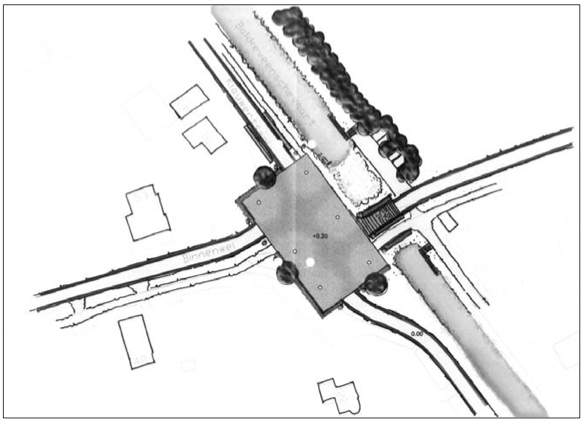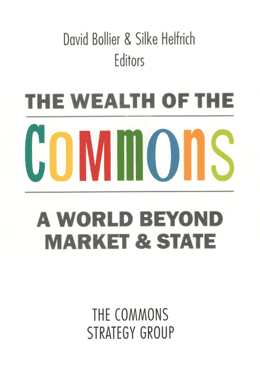Streets and plazas are the spaces of the public, the spaces where people encounter each other. Such encounters can be fleeting or intense, but they always imply the possibility of lingering. Yet lingering is difficult if not impossible if our roads are designed to serve the needs of traffic practically to the exclusion of everything else. The concept of Shared Space was developed to contrast any singular use of a space with a more flexible concept of space open to diverse uses. The design of a street should not predetermine just one particular use, but be open and adaptable for many uses.
Sharing, not dividing
Social processes and structures are reflected in public space. However, we have replaced social cooperation with legally regimented separation, where cars, pedestrians and cyclists each have their own lanes and each use (shopping, recreation, living and working) has its own area. Shared Space seeks to reconnect these uses.
Public space is characterized by the fact that it is the place where the most varied interests, outlooks on life and actions can meet. The opportunity for communication and mindfulness, consciously experiencing things and acting, is essential for this to occur. Mindfulness is directed both to one’s external surroundings and to internal processes. It assumes that we are both independent individuals and responsible members of a polity. As individuals, we are diverse. As a collective, we need to create connections and cohesion among ourselves. Where could that be expressed better than in the street?
How does Shared Space work?
- The most important prerequisite is decelerating automobile traffic. Contact and communication are possible only when people travel slowly. Deceleration is not brought about by force. It comes about when a street is redesigned to help drivers change their routines: they see various people doing different things to their left and right, and sometimes directly ahead. They recognize that the street is alive, not only lengthwise, but also crosswise. They slow down, thereby making the street safer for everyone.
- A different design encourages pedestrians and cyclists to use the entire street, not just the sidewalks and bike paths. They can cross the street wherever they like, not only at designated pedestrian crossings. That requires a certain amount of trust (but not blind trust) that generally speaking, drivers are not murderers. Pedestrians and cyclists, too, bear responsibility for safety. They make contact and make sure that they have been seen, while at the same time signaling to drivers: the street is not yours alone.
Imagine a country road linking several villages that has an intersection where dangerous situations often arise because people drive too fast. That intersection, where accidents occur time and again, turns the road into an undesired barrier within the surrounding area, which is used for recreation. On average, 3,000 to 4,000 motor vehicles and 750 to 1,000 cyclists pass the intersection per day. This example is from the Netherlands; the road connects the villages of Ureterp, Siegerswoude and Bakkeveen. It took a lot of time for the residents of these villages to convince the politicians that Shared Space was a feasible option here. But they persevered and transformed the conventional intersection into a plaza where the drivers perceive the proximity of the villages, even if they cannot see them from there. Today, the local residents call it the “village square.” Drivers approaching it cannot immediately see where the road continues, since it has been shifted sideways on the far side of the plaza. They have to get their bearings and drive more slowly, which makes the village square safer. Street furniture and greenery were designed with great care. The new village square provides for more mindfulness and more encounters. When the weather is good, there is even a small ice cream stand.

Backbone and commitment
If jointly used spaces are to function in practice and take account of transportation needs, urban design and social participation are required. Cities and towns do not need expensive or trendy road designs; they need a cross-sectoral perspective on the function, uses and design of public spaces. And this requires politicians with backbone – leaders who recognize that a different street design can result in different driving behaviors, and this in turn can lead to less gasoline usage and lower CO2 emissions.
But Shared Space also requires citizens to develop a different attitude and different behaviors. Citizens must have a say in decision-making, and tough choices have to be made; they must not shift responsibility to politicians, the police or the scientific community. The challenge is to act in a consensus-oriented and communicative manner rather than invoking our rights.
Shared Space stands for cooperation in partnership, not only in our behavior in the street, but also in forming opinions on current issues. Here, too, the challenge is to be creative and to share the work, the responsibility and the “space.” That results in citizens having more opportunities for self-determination and having their say. The condition is that everyone rethinks their position and takes responsibility, instead of considering themselves simply to be suppliers or consumers of public services.
Shared Space is a plea and an experimental practice for this type of common and continuous learning process in urban design and civic culture. There is a lot to be done if we are to make public space our space again. We’ve already made a start!
 Buy at Levellers Press
Buy at Levellers Press 